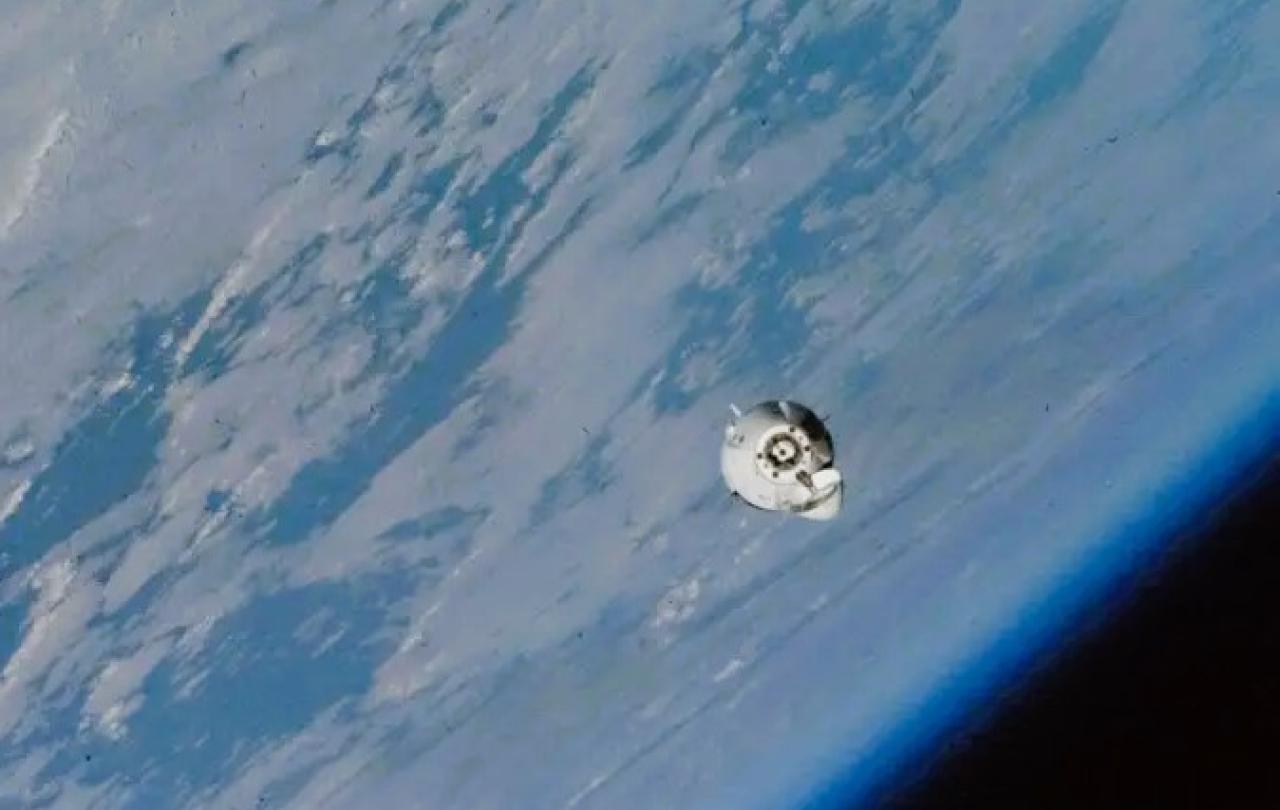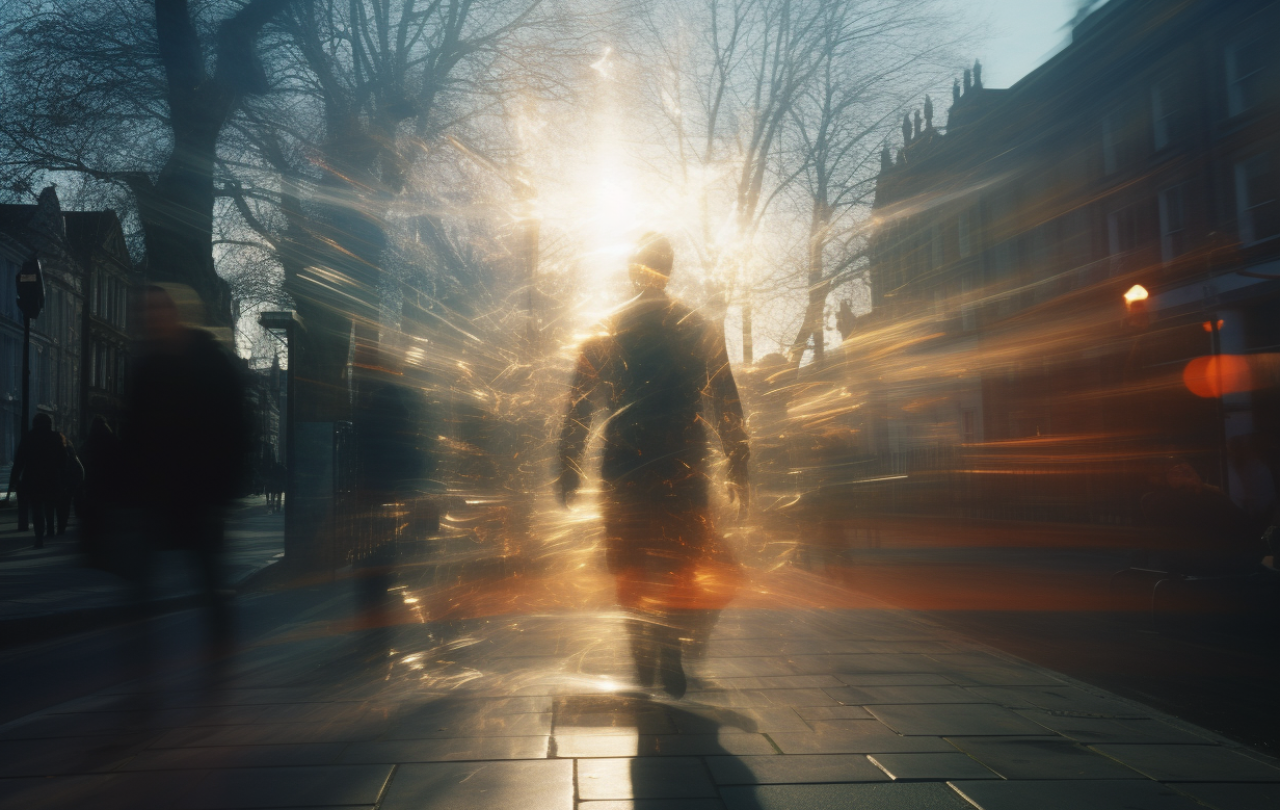
As I write this, two Nasa astronauts – Suni Williams and Butch Wilmore (possibly the most USA-sounding name imaginable) – are preparing to leave the International Space Station to return to Earth. They were supposed to stay on the space station for eight days, but a technical problem with their spacecraft meant they’ve been stranded in space for nine months.
Nine. Months.
It sounds like the premise for a horror film. Two stranded astronauts slowly descend into madness as they become increasingly isolated and cut off from humanity. Written and directed by M. Night Shyamalan, probably.
That’s a lot of time to be stuck orbiting Earth, gazing at the pale blue dot, contemplating our little corner of the universe. There’s a phenomenon called the overview effect: a shift in thinking astronauts go through when they see Earth from space. Putting the planet into the wider context of the entire cosmos leads observers to rethink humanity’s place in the universe, and what it means to be human. I imagine Suni and Butch have had quite a bit of time to do just that in recent months.
And the overview effect is currently having a bit of a moment in wider culture, too.
If you went into any bookshop in the weeks before Christmas, you likely saw stacks of Samantha Harvey’s novel Orbital. It tells the story – although there’s not much by way of traditional ‘story’ in Orbital – of six astronauts on the International Space Station, pondering the nature of humanity from their lofty vantage point.
Having won the booker prize, booksellers were keen to encourage readers to buy Oribtal. Praised by the Booker Prize judges for its “beauty and ambition”, I was looking forward to reading it, when I could. (And, let’s be honest, it’s a short book, which probably helped sales. Who has the time to read Ulysses or Infinite Jest in between school runs and weekly shops?)
When I finally read it in January, I was left disappointed. I found a surprising lack of humanity in Orbital. With the exception of one astronaut – who spends her time mourning her recently deceased mother some 250 miles up in the sky – the characters feel somewhat paper thin; barely human. As the story meanders from person to person, never really settling on one character long enough to really develop them, it feels a bit … insubstantial?
Maybe it’s a victim of its own hype. Maybe the not-quite-humanness of the astronauts and the listless quality of the narrative are intentional, designed to capture the ungrounded nature of life in space in both form and content. Maybe that’s being generous. Either way, I was left closing the book and shrugging my shoulders. If Orbital was supposed to offer a glimpse into that overview effect, it left me nonplussed.
By coincidence, Steven Wilson has just released his eighth solo album: The Overview. Who is Steven Wilson, you ask? Only “probably the most successful British artist you've never heard of” according to The Daily Telegraph. With Wilson’s album currently sitting at #1 in the UK album charts, it doesn’t seem an unwarranted title.
In The Overview, Wilson explores the overview effect across just two lengthy pieces of music. In the first, Wilson contrasts the mundanities of life on Earth with the chaos of space, calling us to attend to miracle that is humanity, thanks to lyrics written by the annoyingly talented Andy Partridge of XTC:
“And there in an ordinary street
A car isn't where it would normally be
The driver in tears, about his payment arrears
Still, nobody hears whеn a sun disappears in a galaxy afar.”
With Partridge’s help, Wilson manages to capture that humanity so sorely lacking in Orbital. Amid a sea of seemingly barren space, there is life here on this small, pokey planet, and the dramas and stresses of a man fretting about his debts don’t seem out of place, even when compared to the implosion of a star on the other side of the universe.
All this makes a recent interview with Wilson all the more odd.
When speaking about the overview effect, Wilson says “Your life is futile, it’s meaningless – and isn’t that a wonderful thing?” before doubling down: “And I do mean that. We spend so much of our time anxious, stressed, worried about things that sometimes we just need an injection of perspective.”
For Wilson, this perspective – this overview effect – is liberating. It allows to stop navel-gazing, to pick our heads up and to realise our freedom to do whatever we want. After all, everything’s just matter in varying different arrangements:
“The clouds have no history
And the sea feels no sorrow
The oxygen recycled
And the atoms are just borrowed,”
At the climax of the album’s second epic, Wilson sings – with more glee than it warrants –
“There's no reason for anything
Just a beautiful infinity
No design and no onе at the wheel.”
Cheery stuff.
It's easy to see why, in the same interview, Wilson rails against the concept of religion: “Religion is a classic manifestation of cosmic vertigo … To even understand even the very simplest, most basic facts about space, should be enough to disabuse anyone of the notion of God. But apparently it doesn’t.”
It all sounds a bit like an angsty teenager encountering the New Atheists for the first time. And this edge to Wilson’s work jars uncomfortably with the humanitarian streak that runs through his music. Wilson wants (rightly) to celebrate the mundane, the ordinary, and the human. And simultaneously wants to tell us that we’re just … stuff. Just atoms arranged in one way or another. Wilson pays lip-service to the humanity missing from Orbital, but it’s superficial.
And all this reminds me of my favourite video game ever: 2019’s The Outer Wilds. (Not to be confused with 2019’s also-space-based-but-decidedly-mediocre The Outer Worlds). In The Outer Wilds, you play as an alien with a ramshackle spaceship who sets off to explore their solar system. Except every 22 minutes, the sun explodes. When it does, you wake up on your home planet and start again.
You use these 22-minute loops to explore the solar system, flying manually from planet to planet, and exploring every nook and cranny of them in the process. You see awe-inspiring sights and are confronting with the absolute otherness and horror of the vastness of space.
And yet. As you explore, you come across notes left by long-forgotten civilizations. Mundane lists and frustrated exchanges between colleagues. You come across life, in other words, even if you don’t meet many other actual people. I can’t say much more than this without ruining the game: The Outer Wilds depends on your real-world knowledge to progress, and so, the more I tell you, the more I ruin.
But, suffice it to say that this is exactly what is missing from Harvey and Wilson’s work. While they both ostensibly want to remind us of the value and the miracle of humanity, both leave me feeling cold. Both leave me with the impression that life is little more than atoms arranged one way and not the other. Just stuff.
But in The Outer Wilds, the sun’s implosion – and all that is lost with it – is a genuine heartbreak every single time. I think about all the stories I’ve read, and the people I’ve met, and how it’s all about to be lost as a bright supernova washes over me. And then I wake up again at the start of the cycle, relieved that all is not lost.
If you can, you should play The Outer Wilds. It’s beautiful. Really, really beautiful. More so than Orbital or The Overview. Our place in the universe can be overwhelming; we’re small, and the universe is strange and scary. But we’re not just insignificant stuff. Our stories and the people we share them with matter. And Outer Wilds captures this tension impeccably. Only it captures life’s miraculous nature in the way it deserves.
Celebrate our 2nd birthday!
Since March 2023, our readers have enjoyed over 1,000 articles. All for free. This is made possible through the generosity of our amazing community of supporters.
If you’re enjoying Seen & Unseen, would you consider making a gift towards our work?
Do so by joining Behind The Seen. Alongside other benefits, you’ll receive an extra fortnightly email from me sharing my reading and reflections on the ideas that are shaping our times.
Graham Tomlin
Editor-in-Chief





